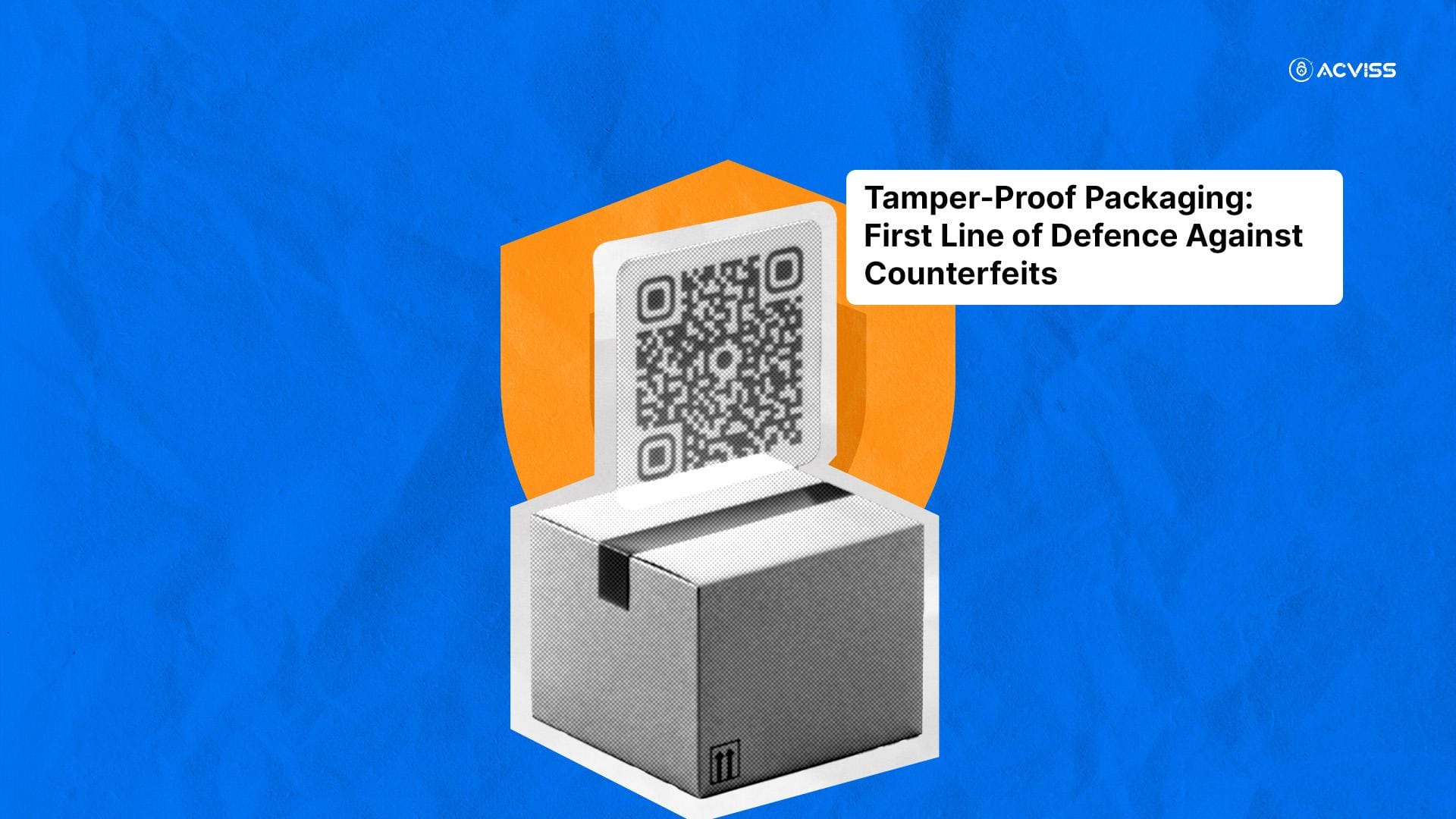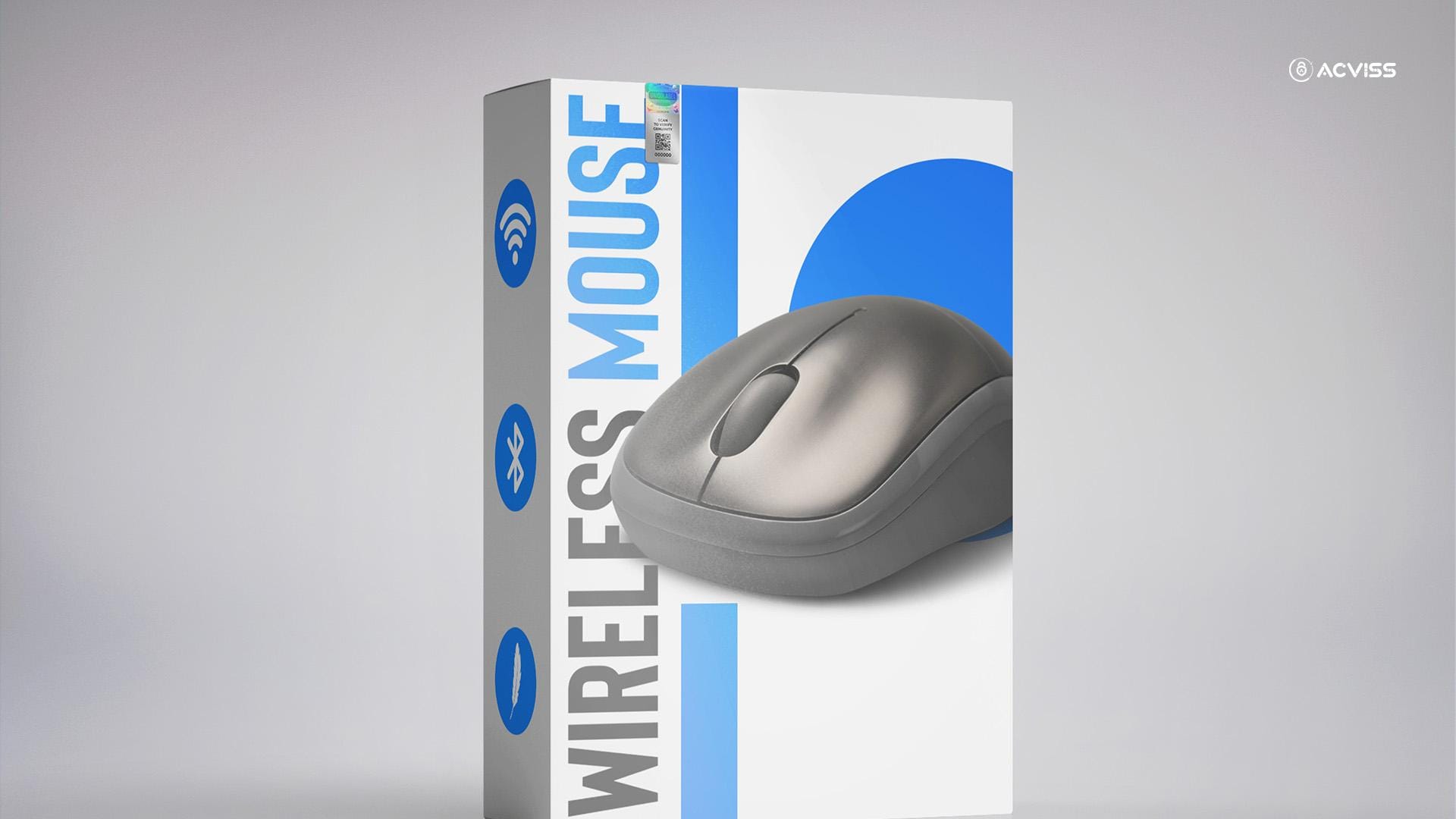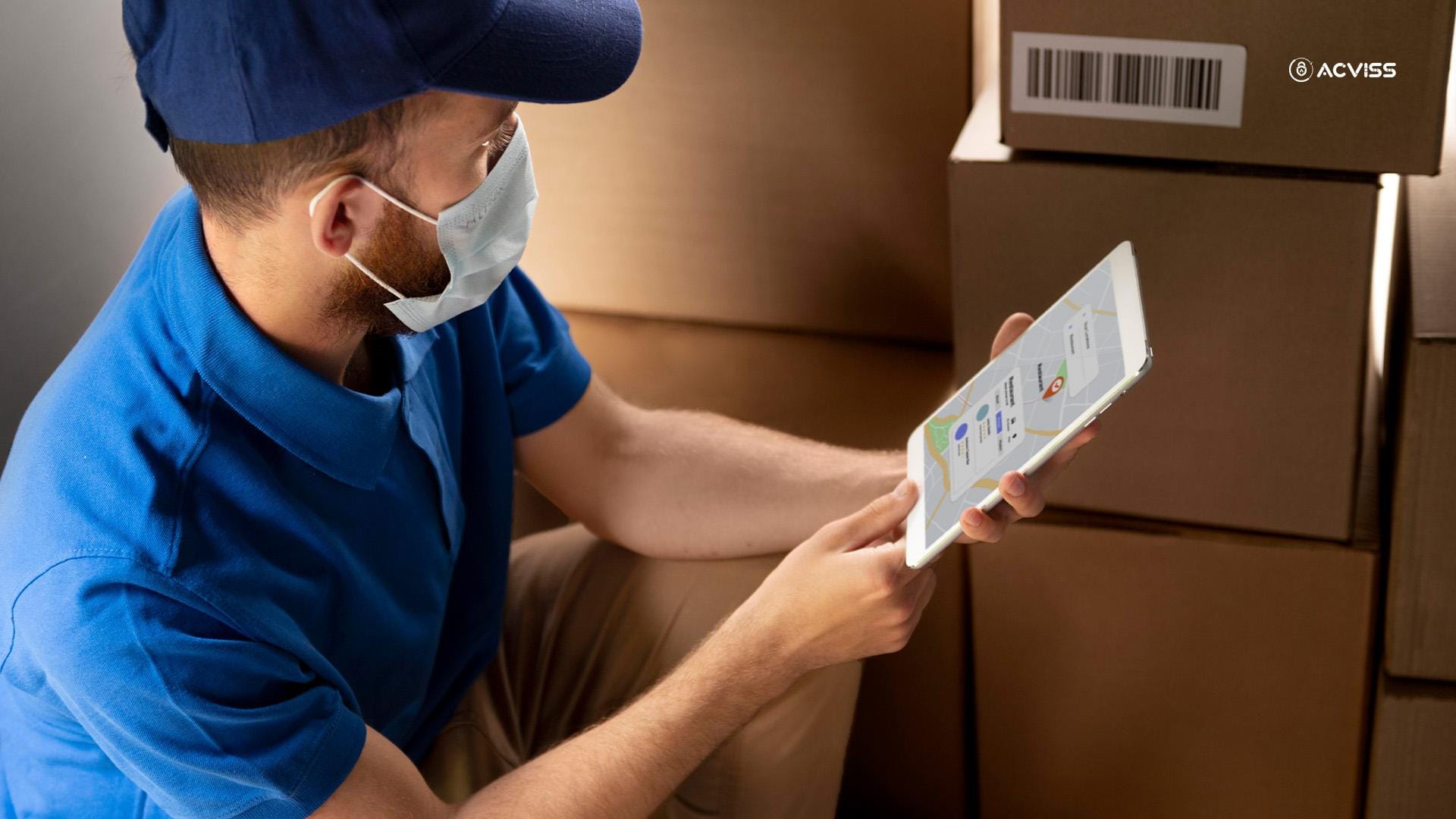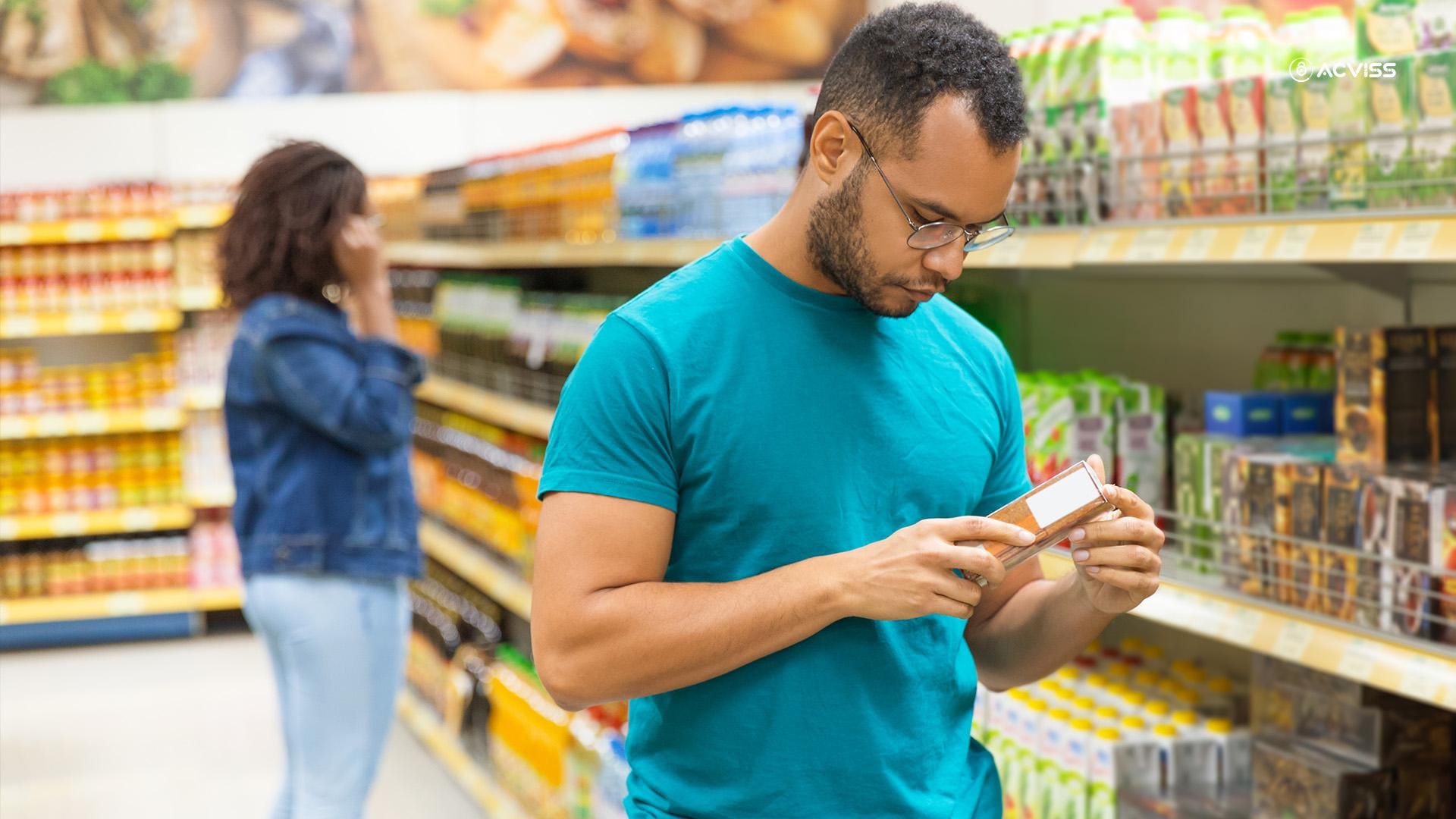Why Tamper-Proof Packaging is The First Line of Defence Against Counterfeits

The global marketplace thrives on trust. When customers purchase a product, they are not only buying a physical item but also the promise of quality, safety, and authenticity. Yet, that promise is being eroded by one of the fastest-growing threats in commerce today: counterfeiting.
According to the OECD and EUIPO, international trade in counterfeit and pirated goods is worth over USD 500 billion annually, accounting for more than 3% of global trade. Counterfeiters have infiltrated almost every industry, from pharmaceuticals and consumer electronics to food, cosmetics, and automotive parts. The impact extends far beyond economic losses. Fake medicines risk lives, counterfeit food undermines public health, and substandard spare parts compromise safety.
For brands, counterfeiting is more than a financial challenge. It damages reputation, erodes consumer trust, and undermines long-term customer relationships. In this battle, tamper-proof packaging has emerged as the first and most visible line of defence. It acts as the guardian of authenticity at the very point of consumer interaction. But while tamper-proof packaging forms the foundation, it must be integrated into broader brand protection solutions, combining packaging innovations with track and trace technologies and product authentication systems.
Why Packaging Sits at the Heart of Brand Trust
Packaging has always carried a dual purpose: protection and communication. It safeguards a product through its journey in the supply chain management ecosystem while also communicating the brand’s identity, values, and promise. With counterfeiting on the rise, packaging has assumed a third role: verification.
The logic is straightforward. If packaging can demonstrate clear evidence of tampering, consumers have the power to make immediate decisions about authenticity and safety. This makes tamper-proof designs critical to product authentication and brand verification efforts.
A study by PwC revealed that over 60% of consumers are less likely to purchase from a brand again if they unknowingly bought a counterfeit product. Packaging, therefore, is not merely a vessel but a trust-building mechanism.
What Makes Packaging Tamper-Proof?

The phrase "tamper-proof packaging" refers to packaging designed to show visible signs if interference occurs. Unlike standard packaging, these designs cannot be resealed or repaired without leaving clear evidence. The goal is not only to deter counterfeiters but also to empower consumers to identify authenticity at a glance.
Common Tamper-Proof Packaging Features
- Seals and Breakaway Closures
Special seals, caps, or tear-away closures prevent the container from being opened without visible damage. Widely seen in bottled beverages and pharmaceutical products, these designs provide immediate assurance of integrity. - Shrink Bands and Wraps
A transparent band or wrap around a lid or closure is destroyed once the package is opened. These are cost-effective and provide clear visual cues. - Induction Seals and Foils
Used in food and cosmetic packaging, induction seals provide both protection against leakage and tamper evidence. - Security Labels and Holograms
Labels embedded with holographic patterns, microtext, or colour-shifting inks make replication challenging. Many brands now integrate product verification technologies within these labels. - Void Labels and Destructible Films
Labels that leave behind a "void" mark or break apart when removed ensure packaging cannot be resealed or reused for fake products.
Each feature acts as a visible deterrent. However, as counterfeiters grow increasingly sophisticated, relying on one method is rarely sufficient.
The Expanding Role of Anti-Counterfeiting Technologies
Tamper-proof packaging is essential, but it must evolve in step with counterfeit networks that exploit digital marketplaces and cross-border trade. Brands are now blending physical deterrents with anti-counterfeiting solutions powered by advanced technologies.
Packaging Meets Digital Verification
Today’s product authentication goes beyond holograms and foils. Digital features embedded in packaging include:
- QR codes with unique identifiers that can be scanned for instant brand authentication.
- RFID and NFC chips provide a digital footprint of the product’s journey through the supply chain.
- Blockchain-based records offering immutable transparency for product traceability.
These innovations bridge physical packaging with digital ecosystems, ensuring that counterfeiting is deterred not only in the offline world but across the omnichannel retail landscape.
Why Traceability is the Backbone of Brand Protection

While tamper-proof packaging protects the consumer touchpoint, traceability safeguards the journey from manufacturer to marketplace. Weaknesses in supply chain management, such as grey markets, third-party resellers, and cross-border shipping, create loopholes for counterfeit products to enter.
Track and trace systems plug these gaps by recording every step of a product’s lifecycle. From raw material sourcing to retail shelves, traceability allows manufacturers to verify authenticity and detect diversion points.
For instance, pharmaceutical regulators in India and the European Union mandate serialisation and reporting systems to ensure medicines can be tracked across borders. The same principle is now finding ground in food, luxury goods, and electronics.
This is where Origin by Acviss steps in. By combining blockchain with brand protection technologies, Origin enables manufacturers to establish an unalterable chain of custody. Every scan, movement, and verification is recorded, ensuring brands can demonstrate compliance while giving consumers a simple way to confirm authenticity.
Trademark and IP Protection: Extending Packaging’s Role
Counterfeiting is not just about stealing sales; it’s about infringing on trademarks and violating IP protection. Tamper-proof packaging, combined with digital authentication, supports enforcement by creating irrefutable evidence of infringement.
A counterfeit product may attempt to replicate logos, fonts, or packaging colours, but replicating advanced brand protection solutions, especially those tied to product authentication systems, is far more complex.
Intellectual property offices across the globe encourage brands to embed product verification features as part of their overall trademark protection strategy. This not only strengthens legal enforcement but also provides concrete proof during disputes.
Real-World Applications Across Industries
Tamper-proof packaging and anti-counterfeiting technologies are not confined to any one industry. Their adoption is widespread and growing.
1. Pharmaceuticals
Perhaps the most critical sector. Counterfeit medicines cost an estimated 250,000 lives annually, according to the WHO. Tamper-evident seals and track-and-trace compliance under regulations like the EU Falsified Medicines Directive save lives while strengthening trust.
2. Food and Beverages
From baby formula to bottled water, food counterfeiting is a rising threat. Tamper-proof closures and smart labels assure consumers that products are fresh, safe, and unaltered.
3. Luxury Goods
The fashion and luxury sector loses nearly USD 100 billion annually to counterfeits. Tamper-proof tags and blockchain-led product traceability offer a new layer of protection for brands heavily reliant on exclusivity.
4. Consumer Electronics
Counterfeit gadgets and accessories not only hurt sales but also pose serious safety hazards. Secure packaging and brand verification technologies provide reassurance to consumers wary of online purchases.
5. Automotive Parts
Counterfeit brake pads, tyres, and lubricants directly compromise road safety. Packaging with tamper-proof seals combined with digital product authentication systems ensures only genuine parts enter the supply chain.
Why Brands Cannot Afford to Ignore This

The economics of counterfeiting are simple: fakes are profitable, easy to circulate, and difficult to regulate without proactive brand action. For legitimate companies, the costs are staggering.
- The International Chamber of Commerce projects that global losses to counterfeit goods will exceed USD 4.2 trillion by 2025.
- Businesses spend millions annually on legal action and recalls caused by counterfeits.
- Rebuilding consumer trust, once lost, often proves more costly than direct financial loss.
For brands, the question is not whether they can afford to invest in brand protection solutions. The question is whether they can afford not to.
Building a Holistic Defence Strategy
Tamper-proof packaging cannot work in isolation. Brands must integrate packaging innovations with a broader, multi-layered anti-counterfeiting strategy.
Layer 1: Visible Deterrents
Tamper-proof seals, void labels, and destructible packaging components create immediate, physical evidence of authenticity.
Layer 2: Covert Features
Invisible inks, microtext, or digital watermarks provide additional layers, useful in enforcement and legal disputes.
Layer 3: Digital Verification
Track-and-trace systems, blockchain solutions, and unique identifiers enhance product verification. This is where Origin becomes a critical enabler, offering seamless product traceability and compliance visibility.
Layer 4: Consumer Engagement
Empowering consumers with the ability to verify authenticity, whether through a scan or a visible seal, builds confidence and loyalty.
Layer 5: Continuous Monitoring
Beyond packaging, brands must monitor online and offline channels to detect counterfeit listings, ensuring end-to-end IP protection.
The Human Side of Tamper-Proof Packaging

At its core, tamper-proof packaging is not just a technical or regulatory requirement. It is about consumer psychology. A mother checks if a bottle of baby food is safe. A patient trusts their medicine. A driver depends on genuine brake pads. Each interaction is a moment of truth where the brand either earns or loses trust.
This is why investment in tamper-proof packaging and brand authentication technologies goes beyond financial protection. It protects lives, builds relationships, and secures legacies.
Looking Ahead: The Future of Brand Protection
As counterfeiting networks adapt, the future lies in convergence. Physical packaging, digital ecosystems, and regulatory frameworks will merge into a unified brand protection strategy. AI-driven monitoring, machine learning-based risk assessment, and IoT-enabled traceability are already shaping the next decade of defence.
For brands, the challenge is staying ahead. By embedding tamper-proof packaging as the first line of defence and strengthening it with advanced solutions like Origin, they can build resilient systems that deter counterfeiters while fostering consumer loyalty.
Conclusion
Tamper-proof packaging is far more than a technical innovation. It is the visible embodiment of a brand’s commitment to safety, authenticity, and trust. Alone, it can deter tampering, but when integrated with advanced anti-counterfeiting solutions, track and trace technologies, and product traceability systems, it becomes a formidable shield against counterfeiting.
In an era where counterfeit trade continues to rise, the brands that win will be those that treat packaging not just as a box or a seal, but as the cornerstone of IP protection and consumer trust.
Interested to learn more about how tamper-proof packaging and traceability can safeguard your brand? Get in touch with us today.
